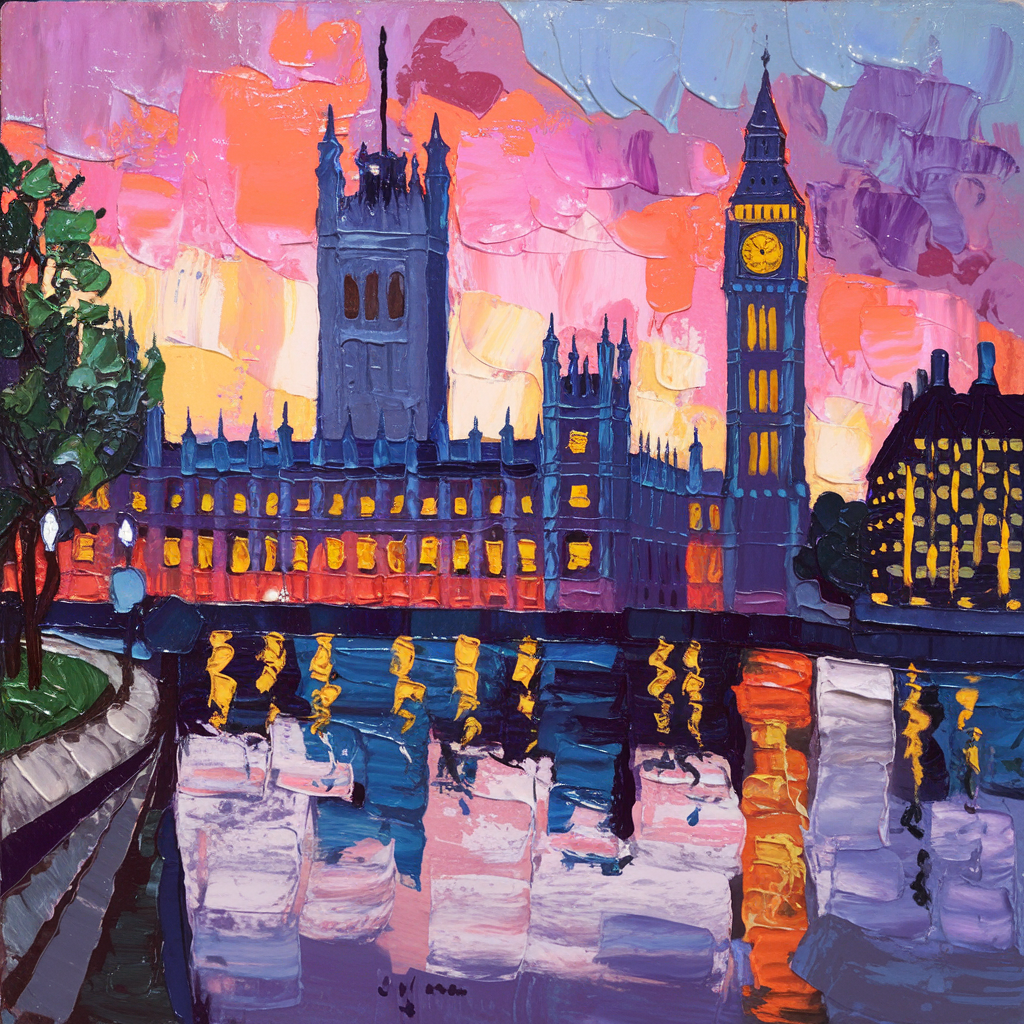The Captivating Connection Between Impressionism and Big Ben

Emerging in the late 19th century, the revolutionary art movement Impressionism aimed to depict ephemeral events, light, and emotion. One odd yet amazing topic within this genre is Big Ben, the famous clock tower of London. Usually connected with timekeeping and British history, Big Ben became legendary in the works of Impressionist artists, especially Claude Monet. Art history has been permanently changed by this blending of the grandeur of Big Ben with the artistic principles of Impressionism.
What is Impressionism?
Impressionism marks a conceptual change in the art world, not only a technique of painting. Originating in France in the 1860s, impressionism aimed to reject strict academic standards. Artists such as Claude Monet, Edgar Degas, and Pierre-Auguste Renoir dropped exact realism in favor of loose brushstrokes, vivid colors, and a concentration on catching light and atmosphere. Focusing on experience and perception rather than only depiction, this creative method transformed art.
Big Ben: A Historical Icon
An enduring emblem of British culture, Big Ben—formally known as the Great Bell of the Elizabeth Tower—is Built in 1859, its grand neo-Gothic design and the resonant chimes of its clock have made it a famous site seen all about. Big Ben represents permanence and tradition more than just a timekeeper’s tool.
See More: Corn Island: A Hidden Caribbean Paradise in Nicaragua
Impressionism Big Ben: An Unusual Connection
Impressionism and Big Ben would first seem to be rather different. One is a movement anchored in French art, stressing ephemeral events and personal experiences; the other is a solid, immobile emblem of British history. Still, Big Ben’s soaring grandeur over the River Thames is exactly matched by the Impressionist obsession with light, weather, and time.
Claude Monet and Big Ben
Of the Impressionists, Claude Monet is particularly notable for his portrayal of Big Ben. Monet had great fascination in the way fog, sunlight, and Big Ben’s architectural shadow interacted against the Thames during his visits to London. Masterpieces emphasizing the tower’s ever-changing look depending on the time of day and weather, his paintings of it are Monet’s works draw attention to the way time’s passage is both literally and symbolically represented.
The Atmosphere of Big Ben Through an Impressionist Lens
Mood and atmosphere were top priorities for impressionist artists, who also frequently selected subjects that would let them investigate these aspects closely. Big Ben presented a magnificent scene with its great height and proximity to the foggy Thames. There was always enough of inspiration from the way sunlight played on the surface of the water or refracted through fog.
Why Big Ben Inspired Impressionist Artists
Big Ben appealed mostly for its dynamic interaction with its surroundings. The harsh architectural lines of the tower produced an amazing visual contrast against the soft, moving fog. For Impressionists, it stood for modernity and tradition coexisting—a central concern in many of their paintings.
Impressionism’s Focus on Light and Time
The fixation of Impressionists with time and light matches Big Ben’s importance as a timekeeper. The chimes of the tower mark time, a concept that really connected with Impressionist ideas. Perfectly in line with Big Ben’s role, Monet and his friends investigated how light altered throughout hours, seasons, and weather conditions.
Famous Impressionist Paintings of Big Ben
Still some of the most well-known Impressionist pieces are Monet’s Big Ben sequence. Paintings such as “Big Ben in the Fog” and “The Houses of Parliament, Sunset” blur the boundaries between architecture and nature by showing the structure as both substantial and fleeting.
The Thames and Big Ben in Impressionism
Impressionist paintings of Big Ben drew heavily on the River Thames. As light and water interacted, the river’s reflected surface created scenes that were brimming with movement and emotion. Monet brilliantly caught these events using subtle blues, grays, and golds.
Impressionism Beyond Monet
Although Monet is most known for painting Big Ben, the tower inspired several other artists. Artists like J.M.W. Turner and even post-Impressionists like Camille Pissarro investigated London’s cityscapes, therefore adding their versions of Big Ben to the art scene.
How Big Ben Reflects Victorian Society
Big Ben stood for stability and advancement in Victorian England, ideals that spoke to Impressionist artists struggling with a world fast changing. Though sometimes considered as avant-garde, their inventive forms caught these social conflicts.
Conclusion
The junction of Impressionism and Big Ben presents a special window into how art breaks free. Artists like Monet turned a sign of custom into a dynamic depiction of time and light by catching the tower via an Impressionist lens. This ongoing legacy emphasizes how creatively art can transform even the most well-known sites.
FAQs
What makes Big Ben a subject of Impressionist art?
For Impressionists, Big Ben’s architectural grandeur and way it interacted with light, shadow, and weather were mesmerizing.
Which Impressionist artist is most associated with Big Ben?
Among the most well-known Impressionists who show Big Ben in their works is Claude Monet.
What themes connect Impressionism and Big Ben?
Both share a focus on light, time, and the interplay of the natural and man-made worlds.
Are there any specific Impressionist techniques seen in Big Ben paintings?
Indeed, essential in these paintings are methods including loose brushstrokes, vivid color palettes, and an emphasis on atmosphere.
Did other artists besides Monet paint Big Ben?
Indeed. Though Monet is the most well-known, other artists including J.M.W. Turner and Camille Pissarro also caught Big Ben in their works.
Why is Big Ben still an inspiration for modern artists?
Indeed. Though Monet is the most well-known, other artists including J.M.W. Turner and Camille Pissarro also caught Big Ben in their works.










